On January 26, manager Hideki Kuriyama held a press conference and officially revealed Samurai Japan’s full 30-man World Baseball Classic squad. The 2023 WBC, set to begin on March 8, will be the fifth installment of the tournament as Japan will strive to win their third overall title and their first since 2009.
Kuriyama recognizes the necessity to build a team full of young stars to have the best shot at winning the tournament. With 10 of the 14 pitchers (and 13 of the 30 total players) being 25 years old or younger, Kuriyama is banking on Japan’s new guard to perform, and it’s hard to understate their importance. Japan’s 2017 bullpen was headlined by Ryo Akiyoshi (28), Hirotoshi Masui (33), Naoki Miyanishi (32), Kazuhisa Makita (33), and Yoshihisa Hirano (33). Now, all of Japan’s main arms in the pen are 27 or under. Yuki Matsui, who was 22 at the time, is the only holdover on this year’s roster.
The big question marks on the position player side are the lack of a quality-hitting shortstop and another right-handed outfielder. Most notably, Kenta Imamiya (Hawks) would have been an intriguing inclusion to platoon with Genda at short, and Yasutaka Shiomi (Swallows) would have provided power and speed in center. Some fans were also hoping second baseman Hideto Asamura (Eagles) and utility man Taisei Makihara (Hawks) would make the cut. Their presence will surely be missed.
Still, Kuriyama has constructed what is indisputably the greatest Japanese national team roster ever assembled. The pitching – especially the frontline starters and back end of the bullpen – will be Japan’s greatest asset as they look to reclaim glory following two consecutive WBC semifinal exits. At most, Japan will play seven games during the tournament. So Kuriyama’s main job is to figure out how to arrange everyone’s playing time and get the most out of them in a short 50-60 inning span.
As it currently stands, Japan is among the top three tournament favorites, alongside the Dominican Republic and the United States. I believe the Samurai are more than capable of winning it all. It’s one of those rosters where nobody needs to overperform. If everyone just “does their job” and doesn’t crack under pressure, Japan is essentially guaranteed a spot in the semifinals. Whether Japan can go one step further and make it to the championship game, however, will depend on their stars – especially their young stars – delivering in the big moments.
Here’s a brief look at Japan’s team and what to expect from each player.
Two-way Player (1)

Shohei Ohtani, Los Angeles Angels.
What can I say about Ohtani that everyone doesn’t already know? The two-way sensation is expected to star for the Samurai on both sides of the ball as he plays in front of a Japanese crowd for the first time since 2017, when he left Hokkaido for Anaheim. His pitching will likely be quite limited in the early stages of the tournament, but there’s no question that the entire world will have their eyes on Sho-time as he reunites with former Fighters manager Hideki Kuriyama.
Expectation: Designated hitter and pitcher.
Catchers (3)
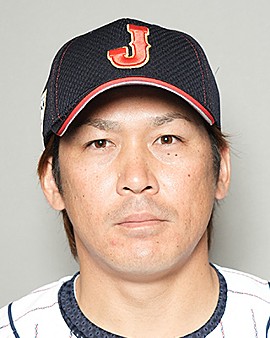
Takuya Kai, SoftBank Hawks.
The Hawks’ backstop split time with Tsubasa Aizawa at the 2019 Premier12 but became the primary catcher at the 2020 Olympics. With an abysmal .180/.273/.223 slash line in 130 games last season, Kai is on the national team for one reason: defense. The six-time Pacific League Golden Glove winner knows the staff well, calls a great game, and has a cannon of an arm. He should have no problem blocking pitches in the dirt from the forkball-heavy Japanese pitching staff.
Expectation: Primary catcher.
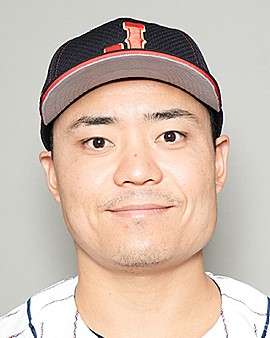
Yuhei Nakamura, Yakult Swallows.
Nakamura has called plenty of big games for the Swallows in the Japan Series over the past two years. A three-time recipient of the Central League Golden Glove award, he offers plus-defense behind the plate. He’s also a much better hitter than Kai, slashing a respectable .263/.334/.361 in 86 games last season. Known for his clutch hitting, the 2021 Japan Series MVP is a battle-tested addition to the squad.
Expectation: Backup catcher.
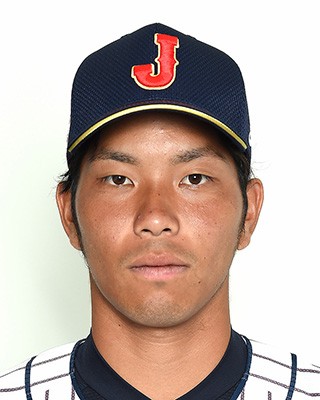
Takumi Ohshiro, Yomiuri Giants.
Japan’s best-hitting catcher, Tomoya Mori, decided to skip the WBC to focus on preparing for his first NPB season with the Orix Buffaloes after starring for the Seibu Lions for nine seasons. Thus, Kuriyama targeted Ohshiro to add a left-handed bat into the catching mix. The 29-year-old posted career-highs in home runs and wRC+ last season at 13 and 113, respectively. Though he is generally regarded as an offense-first catcher, advanced metrics rate Ohshiro very highly defensively, as Deltagraphs named him the best fielding catcher of 2022 thanks to his excellent framing.
Expectation: Pinch-hitter and third-string catcher.
Infielders (7)
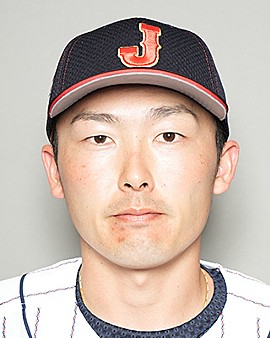
Sosuke Genda, Seibu Lions.
Hayato Sakamoto – the greatest shortstop in NPB history – decided to skip the tournament, as he’s dealt with various injuries and off-field scandals in recent years. That left Genda as Kuriyama’s best option at shortstop. He’s been a below-average hitter by wRC+ in every season of his career but provides elite defense and base-running. In 2022, the five-time Pacific League Golden Glover ranked in the top 10 in NPB in both Ultimate Zone Rating and Ultimate Base Running. Genda may be exposed at the plate against better pitching in the latter stages of the tournament, but he’ll be asked to contribute in other aspects of the game.
Expectation: Starting shortstop.
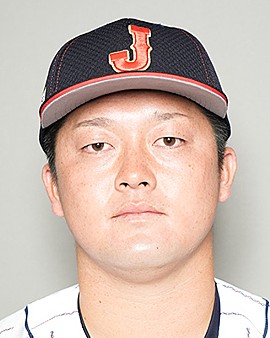
Shugo Maki, DeNA Baystars.
In just two NPB seasons, Maki has established himself as one of the most well-rounded hitters in the country. In 272 career games, the 24-year-old has a .302/.355/.520 slash while only striking out 15.3% of the time. He typically plays second base for the Baystars, but Kuriyama will be more comfortable with him at first base. Even with the latest additions of Yamakawa and Okamoto, I still believe Maki is ahead of them on the depth chart.
Expectation: Regular playing time on the right side of the infield.

Munetaka Murakami, Yakult Swallows.
Expectations for the 22-year-old superstar are off the charts after he set the single-season NPB home run record for a Japanese-born player with 56 homers and a 223 wRC+. In Samurai Japan’s exhibition series against Australia in November, Murakami crushed four home runs in just three games. A lock at the hot corner and the cleanup spot, Murakami — nicknamed Mura-god by fans across the nation — will be asked to consistently drive in runs with his colossal power.
Expectation: Starting third baseman.
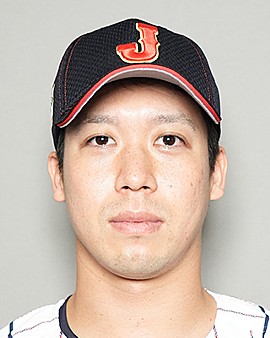
Tetsuto Yamada, Yakult Swallows.
Murakami’s teammate, Yamada, is no longer the five-tool threat he was when he won the Central League MVP in 2015. In his prime, he was one of the best all-around players in Japan and put up four 30-30 seasons. These days, he’s lost a bit of athleticism and strikes out more than he used to, but he still offers excellent defense and power. He ranks fourth among active NPB players with 271 career home runs, 57 of which have come in the last two seasons. If Kuriyama elects to go with his best offensive lineup, he may be pushed out of the starting lineup to allow Yamakawa to play first and let Maki slide over to second, but Yamada’s veteran presence will be invaluable on a team full of young talent lacking international experience.
Expectation: Primary second baseman.
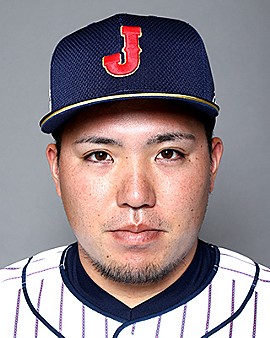
Hotaka Yamakawa, Seibu Lions.
Yamakawa was second in NPB last year with 41 bombs, trailing only Murakami. A great personality on and off the field, Yamakawa is a fan-favorite for his “Dosukoi” home run celebrations and energetic presence. Some fear that his loud swing will not translate well against MLB pitching, but Yamakawa is a threat to go deep every time up, and opponents will have to approach him very carefully. Defensively, he’s limited to first base, so he really needs to mash at the plate to contribute. It will be his first time representing Japan since the 2018 MLB Japan All-Star Series.
Expectation: Part-time first baseman or power off the bench.
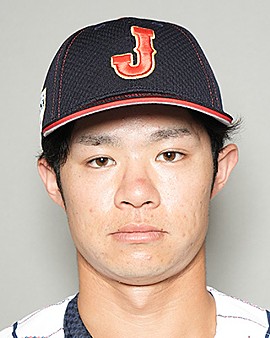
Takumu Nakano, Hanshin Tigers.
I thought Kuriyama would give Nakano some serious consideration, but he wasn’t going to make the team had Sakamoto not opted out. The 26-year-old will play an important role off the bench, mostly as a pinch-runner. In his first two NPB seasons, the Tigers’ middle infielder has recorded 53 stolen bases and has only been caught nine times.
Expectation: Backup shortstop and late-inning pinch-runner.
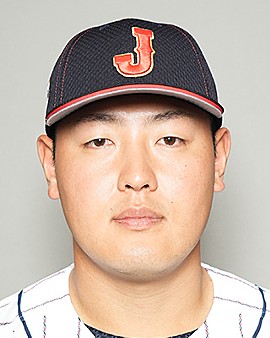
Kazuma Okamoto, Yomiuri Giants.
I didn’t think there was room on the roster for both Yamakawa and Okamoto, but Kuriyama has proven me wrong. The Giants’ third baseman has been one of the most consistent sluggers in NPB for the past half-decade with five consecutive 30+ HR seasons. With Murakami blocking opportunities for him at third, he expects to factor into Japan’s loaded first base mix and provide pop off the bench. He also has some experience in the outfield, though he hasn’t played there since 2019. It’s possible that Kuriyama wants to have a revolving door at first base until one of them gets hot and seizes the job. As it stands, though, Okamoto is at the bottom of the pecking order.
Expectation: Power off the bench.
Outfielders (5)
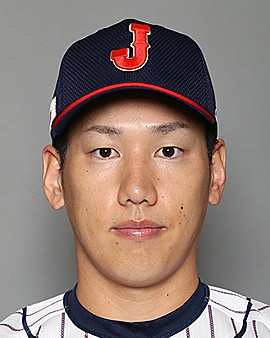
Masataka Yoshida, Boston Red Sox.
After leading the Orix Buffaloes to their first Japan Series title in 26 years, Yoshida signed a five-year contract worth $90 million with the Red Sox this off-season. In 2022, he batted .335/.447/.561 and only struck out 41 times in 119 games. His commitment comes as a pleasant surprise since many Japanese players elect to skip international tournaments in their first year going to MLB to adjust to their new environment. He is the best pure hitter and one of the most dynamic run-producers on the team, allowing Kuriyama to hit him essentially anywhere in the batting order, from lead-off to the 5-hole.
Expectation: Starting left fielder.
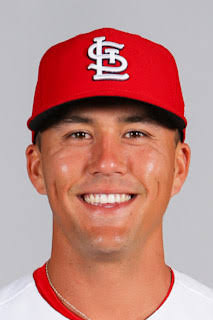
Lars Nootbaar, St. Louis Cardinals.
Nootbaar — the first non-Japanese-born player ever to make the national team — is one of the most intriguing names on the roster. Many Japanese fans have mixed feelings about his inclusion on the roster, as some believe there were domestic players that deserved his spot on the team. However, there’s no question that his MLB experience and lively personality will be a positive influence on the team. Moreover, Nootbaar plays all three outfield spots above-average defensively and brings solid power and on-base skills.
Expectation: Starting center fielder.
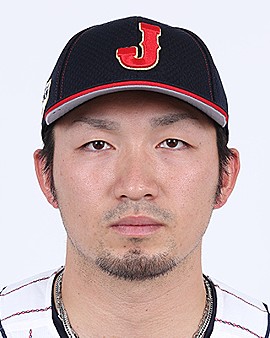
Seiya Suzuki, Chicago Cubs.
Suzuki blew the competition away in his final NPB season with the Hiroshima Carp, slashing .317/.433/.639 with 38 home runs and a 199 wRC+. His first MLB season with the Chicago Cubs in 2022 was a bit underwhelming, as he only managed a .770 OPS with 14 homers in 111 games. Still, he showcased flashes of superstardom and will play a vital role in the heart of Japan’s order as their most reliable right-handed source of power. He will likely hit 2nd, 3rd, or 5th in the lineup to balance out the left-handed hitters.
Expectation: Starting right fielder.
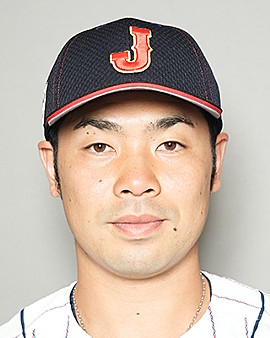
Kensuke Kondoh, SoftBank Hawks.
Kondoh is one of Japan’s finest pure hitters, with a career slash line of .307/.413/.434 and an excellent 1.07 BB/K ratio. He is technically capable of playing all three outfield positions but doesn’t contribute much in the way of defense. However, he provides Kuriyama — his former manager on the Fighters — with an elite bat off the bench. I expect him to be deployed if a subpar hitter like Takuya Kai is up in a key spot with runners on base.
Expectation: Pinch-hitter.
Utility (1)
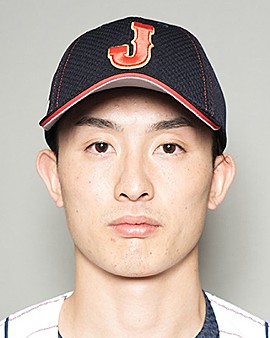
Ukyo Shuto, SoftBank Hawks.
Shuto is the jack of all trades, having played six different positions for the Hawks over the past two seasons. He grades as well above average in all three outfield positions and third base. He won’t get many at-bats but will probably find a way to factor into many games due to his elite speed. In 355 career games, the speedster has swiped 118 bags at 85.5% efficiency.
Expectation: Pinch-runner and defensive replacement.
Projected depth chart based on current roster
Catcher: Kai, Nakamura, Ohshiro
First Base: Maki, Yamakawa, Okamoto
Second Base: Yamada, Maki, Nakano, Shuto
Third Base: Murakami, Okamoto, Shuto
Shortstop: Genda, Nakano, Shuto
Left Field: Yoshida, Kondoh, Shuto, Okamoto
Center Field: Nootbaar, Shuto, Kondoh
Right Field: Suzuki, Nootbaar, Shuto
Right-handed Pitchers (10)

Yoshinobu Yamamoto, Orix Buffaloes.
Yamamoto needs no introduction to NPB fans. He’s won back-to-back Pacific League MVP awards, Sawamura awards, and Pitching Triple Crowns. He’s regarded as the true ace of Samurai Japan. Over the past two years, he’s gone 33-10 with a 1.55 ERA and 411 strikeouts across 386.2 frames. It’s really difficult to determine which of his many elite-caliber pitches — the fastball, slider, cutter, curveball, and forkball — is his best one. Simply put, he’s the best pitcher Japan has produced since Yu Darvish and Masahiro Tanaka were at their peak over a decade ago.
Expectation: Ace.
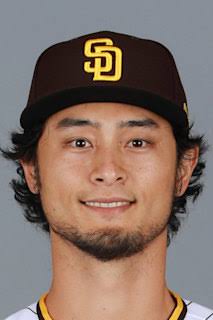
Yu Darvish, San Diego Padres.
Darvish got the final out in the 2009 WBC championship game against Korea, the last time Samurai Japan won the tournament. It’s been almost fourteen years since that day, but Darvish is still one of the best pitchers in the world. After pitching for the Fighters from 2005 to 2011 — including five consecutive sub-2 ERA seasons — Darvish has jumped around America and pitched for the Rangers, Dodgers, Cubs, and Padres. Even at 36 years old, Darvish is still an elite starting pitcher, as he ranked top 15 in MLB last year in K/9 and fWAR. Kuriyama will be counting on him to be one of the many big-game pitchers in the rotation alongside Ohtani and Yamamoto.
Expectation: Starting pitcher.
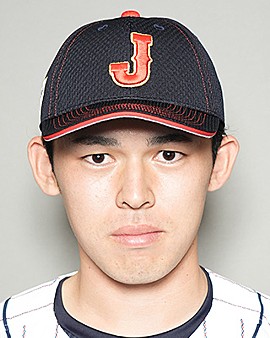
Roki Sasaki, Lotte Marines.
Nicknamed the “Monster of the Reiwa Era,” the 21-year-old made global headlines last April when he pitched a 19-strikeout perfect game and followed it up with eight more perfect innings in his very next start. He hit a bit of a rough patch in the second half, but his overall numbers were simply ridiculous. For pitchers with at least 125 innings, he lapped his competition in strikeout rate (35.3%), Fielding Independent Pitching (1.72), and WHIP (0.80), among many other key statistics. Not to mention he tops out at 102 mph and consistently sits around 98-99. Based on his durability last year, or lack thereof, Kuriyama will have to make a choice whether he wants the young phenom to be a starter, to maximize his value, or a reliever, to be unleashed in short bursts.
Expectation: Starting pitcher.
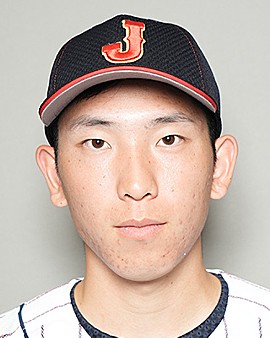
Shosei Togo, Yomiuri Giants.
Togo set career-highs across the board in 2022, managing a 2.62 ERA with 154 strikeouts in a Central League-best 171.2 innings. He sits in the low-90s but can reach the mid-90s and has an excellent slider and split-finger as his main swing-and-miss weapons. At 22 years of age, Togo still has plenty of room to grow, but he’s ready for the international spotlight. He’ll likely be a bulk-innings reliever but is more than capable of starting against weaker opponents early in the tournament.
Expectation: Bulk-innings reliever.
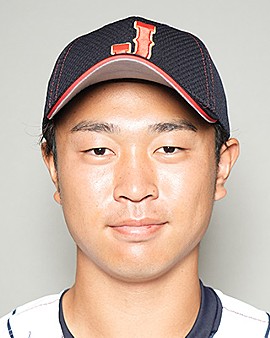
Hiroto Takahashi, Chunichi Dragons.
At just 19 years old, Takahashi had one of the most impressive rookie seasons in recent history. He was second in NPB among pitchers with at least 110 innings in strikeout rate at 29.0%, only behind Sasaki, and ranked fourth in Called Strike + Whiff rate at 30.8%. There were times last summer when the teenager was practically unhittable. In July, he surrendered just two runs, seven hits, and five walks in 21.1 innings with 28 punchouts. There’s no doubt that he’s one of the most electric pitchers at Kuriyama’s disposal.
Expectation: Bulk-innings reliever.
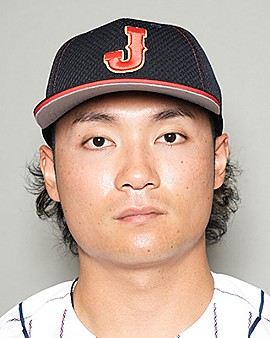
Hiromi Itoh, Nippon-Ham Fighters.
On a staff full of flamethrowers, Itoh is one of the only pitchers that relies more on his off-speed pitches and deception. The 25-year-old is well known for his unorthodox styles, such as the occasional sidearm delivery and eephus pitch. Despite only striking out 6.5 batters per 9 innings last season, he had the lowest opponent hard-hit percentage in NPB at 29.0% and kept the ball in the park very effectively (0.3 HR/9). He may not be trusted in high-leverage situations, but he’s still a very capable arm that can pitch in any role.
Expectation: Low-leverage reliever.
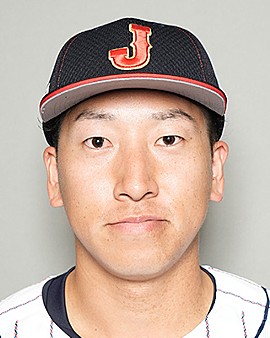
Taisei Ota, Yomiuri Giants.
“Taisei” tied the single-season NPB rookie saves record last season, recording 37 saves with a 2.05 ERA. He averages over 95 mph on his fastball and couples it with a nasty split-finger, as he struck out 60 batters in 57 frames. I expect the 2022 Central League Rookie of the Year to factor into the late-inning mix in one form or another, and he may even get some save opportunities.
Expectation: Late-innings reliever.
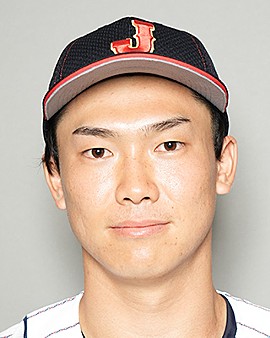
Atsuki Yuasa, Hanshin Tigers.
Yuasa finished second behind Taisei in the Central League Rookie of the Year award vote, but his overall numbers looked even better. After establishing himself as the Tigers’ setup man, the 23-year-old was like a brick wall preventing his opposition from crossing the plate with a 1.09 ERA and 67 strikeouts in 59 innings. He doesn’t throw nearly as hard as some of his counterparts, but still finds ways to overpower hitters.
Expectation: Middle-innings reliever.

Yuki Udagawa, Orix Buffaloes.
Udagawa is Japan’s secret weapon of sorts. If you didn’t watch the second half of the 2022 NPB season, there’s a good chance that you haven’t even heard his name. But after debuting with the Buffaloes’ top team in July, the 24-year-old dominated his competition, putting up an 0.81 ERA with a 36.8 K%. Additionally, he was lights-out in the postseason, striking out ten Swallows and surrendering zero runs across 5.2 innings in the Japan Series. With Seibu Lions superstar reliever Kaima Taira declining his invitation to the tournament, Udagawa is the perfect man to fill his void. He’s also the frontrunner to win the 2023 Pacific League Rookie of the Year award, as he still meets the rookie criteria.
Expectation: High-leverage reliever in strikeout situations.

Ryoji Kuribayashi, Hiroshima Carp.
Kuribayashi is the frontrunner for the closer job as he got the final out of the 2020 Tokyo Olympics to help Japan win the gold medal. In 2021, he was named the Central League Rookie of the Year with an absurd 0.86 ERA and 40.3 K%. On the surface, he wasn’t quite as dominant in his sophomore campaign, with a 1.49 ERA and 31.9 K%, but his underlying statistics looked even better. The 26-year-old lowered his WHIP from 0.97 to 0.77 and didn’t allow a home run all year. In 101 career NPB games, opponents are hitting just .133 against Kuribayashi; He’s effectively unhittable.
Expectation: Closer.
Left-handed Pitchers (4)
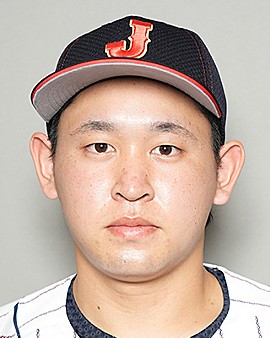
Hiroya Miyagi, Orix Buffaloes.
After winning 13 games and posting a 2.51 ERA in 2021, Miyagi was named the Pacific League Rookie of the Year. His surface-level numbers weren’t nearly as impressive in his sophomore campaign, going 11-8 with a 3.16 ERA. But if you dig a little deeper, the 21-year-old still had an excellent season, even surpassing his rookie marks in FIP (3.00), xFIP (3.17), and K-BB% (15.8). He barely throws 90 mph but still finds ways to miss bats and generate soft contact. He’s a candidate to make a start against a weaker team like China or the Czech Republic, though he’ll likely be in the bullpen most of the time.
Expectation: Starting pitcher and bulk-innings reliever.
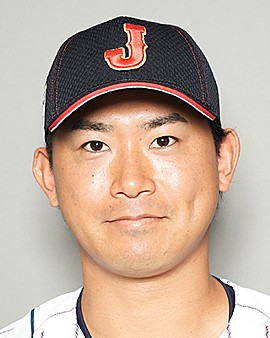
Shota Imanaga, DeNA Baystars.
Imanaga headlines Japan’s group of southpaws. He had a career year in 2022 despite missing the first month of the season, recording a 2.26 ERA, 0.94 WHIP, and 3.24 FIP. In an exhibition game against Australia in November, he struck out ten batters in just four innings. He’s one of the only pitchers on the roster that doesn’t throw a split-finger, so his off-speed weapons are a bit unique. Like Miyagi, the 29-year-old will be a prime starting option against lower-ranked opponents in Pool B.
Expectation: Starting pitcher and bulk-innings reliever.

Keiji Takahashi, Yakult Swallows.
In terms of pure stuff, Takahashi is the best southpaw on the roster. He hasn’t allowed a single run in the Japan Series through 15 innings over the past two years, proving his fortitude in big games. He averages around 92.4 mph on the fastball but regularly hits the mid-90s and couples it with a wicked slider and changeup. At just 25 years old, Takahashi is susceptible to letting his raw stuff get the better of him and losing command of the zone at times. If utilized sparingly, however, he’ll be a major weapon for Kuriyama to unleash for an inning or two to get through the heart of an order.
Expectation: Middle-innings reliever.
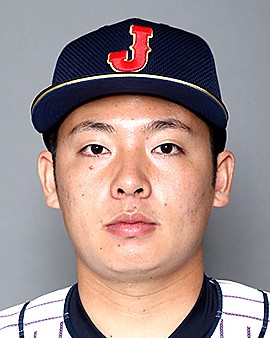
Yuki Matsui, Rakuten Eagles.
Though he’s only 5-8 and doesn’t have an overpowering fastball, Matsui is one of the best strikeout pitchers in Japan. In 2022, he had a superb 42.8 K%, trailing only Livan Moinelo in strikeout rate among qualified relievers. Over the past two seasons, his run prevention has simply been remarkable. Across 94.2 frames, the Eagles’ closer has only allowed 11 runs to give him a 1.33 ERA. He expects to be the primary lefty to factor into high-leverage situations.
Expectation: Late-innings reliever and lefty specialist.



